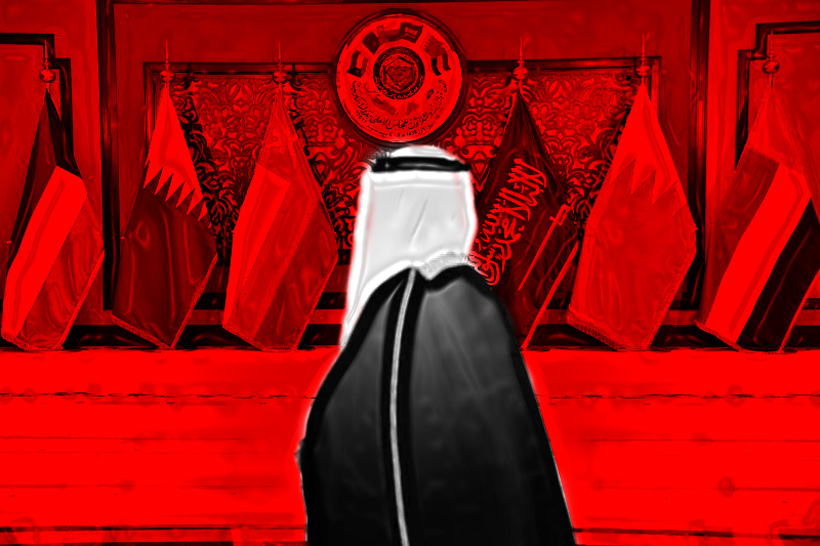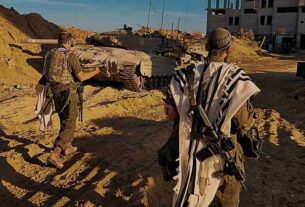Wed 22 January 2020:
Nationalism and national identity are two key concepts in the shaping of the contemporary world since the 19th century.
Nationalism aims to create group loyalty, through a single national identity based on various aspects particular to a certain nation or homeland, including culture, religion, politics and a common shared history. Nationalism, as an ideology and a term, emerged in Western Europe; therefore, the contextual specificity is obvious. Consequently, when studying nationalism in the Gulf states through the current theoretical lenses may seem like puzzle or an exception to the norm, norms set through Western experiences.
Despite some constructive research, many reports and analyses have a reductionist approach and oriental undertones to understanding nationalism and national identity in the Gulf states. Moreover, ‘hot button’ issues, such as the Yemen conflict and blockade of Qatar, merely add to the complexity underpinning nationalism and national identity across the region. There is no time like the present to understand ‘how’ and ‘why’, not to mention the possible shape and trajectory of both concepts, over the years ahead.
The Concept of ‘State’ in the Middle East
In order to understand this, we have to first deconstruct certain concepts built around this topic. We can then start with asking the right questions. Before we discuss nationalism as an ideology of the state, we have to understand the concept of ‘state’ in the Gulf and the Arab world, which is an entire topic of its own. Authors like Nazih Ayubi and Khalil Al-Anani discuss the idea of the modern Arab nation state, in an attempt to answer the question of the modern Arab state.
The Gulf states are part of the broader Arab region. Despite differences in systems and histories, there are some common factors in the state formation processes throughout the region. The contemporary state systems in the region aspired for independence from colonisation and the Western imperial system. Yet the political elite’s attempt to adopt structures and political systems based on the Western model and modernist cultural, political colonialism, defies these goals. These attempts then led to the entangled web of certain notions of Arab identity combined with Islamic identity, in the framework of Western ideology, but adapted to the Arab reality.
Therefore, to understand nationalism in the Gulf states, we have to start by understanding the state formation and transformation processes. This region is influenced by foreign presence and interference, both in internal and regional politics. However, this foreign influence was not always imposed, but rather welcomed and encouraged, by the political elite. After the independence, the British presence was requested by some states; the British were later replaced by the US presence. Due to the lack of trust between neighbouring states, this foreign presence was seen as a means to regional stability and sovereignty of the Gulf states. However, foreign presence, interference and sovereignty are inherently contradictory.
Nevertheless, there was an attempt by the political elite to adopt Western political structures and culture, though these were not fully implemented. The lack of a civil society and effective institutions led to a top-down policy approach, with citizens as subjects with privileges. In light of these background factors, the right question to ask is: at what stage of state building is the contemporary Gulf state, and what stage have they reached in creating cohesive national identity?
Another layer of complexity in national identity creation in the Gulf is the fast-paced economic development, followed by the discovery of oil. This development was both a blessing, but also a curse. It led to a generous welfare system and creation of modern infrastructure, but such development was not matched with social and political development. Two factors are important here: 1. the confusion caused by the attempt to gain sovereignty and independence from Western imperialism on one hand, and on the other hand, the adoption of a Western model and practices as drivers of modernity. 2. The Western parameters and scales as measure for the level of development, without consideration of the local context and history of development.
Multi-layered Identities
Multi-layered identities are not exclusive to the Gulf region, or to the broader Middle East region. Each layer of identity was used as a tool for political agenda, either internally or regionally. Amidst this melting pot of numerous strong layers of identities, the political elite is still configuring a formula that goes beyond state survival, towards creating a sense of loyalty and solidarity amongst the citizens, and to the ruling elite.
These multiple layers of identities based on religion, ethnicity and tribal affiliations have emerged as alternate forms of solidarity, and sometimes considered as a threat to the centralised state power. Prior to independence, tribes were independent organisations, each equivalent to a nation with a particular lifestyle, which contributed to a common identity between people of certain tribes. However, when borders were drawn, people of similar tribes found themselves separated by geographical borders. There was a need for a shift in loyalties and saturation of tribal identities, at the expense of strengthening other forms of identity. For example, the concept of ‘Islamic identity’ is related to unity amongst all Muslims, and goes beyond ethnic identity. Arab identity goes beyond religion and is linked with the concept of unity amongst all Arabs, based on language and cultural ties.
Demographics and the ‘Other’
Adding to this layer of complexity, is the demographics of the region. The Gulf states are the only states with minority citizens and majority expatriates; both permanent residents and temporary migrants. These demographics influences the state and citizen relationship, social, political and economic structures and policies. The expatriate community is the ‘other’, upon which national identity is built. The focus is then inward, rather than outward. National identities are built on the concept of ‘us’ and ‘them’. The ‘them’ in the Gulf is also present within the country, sharing the similar resources and political space as the ‘us’.
These paradoxes of multiple identities and attempts to create a balance between the ‘modernity’ and ‘tradition’, creates divided loyalties. As of now, different versions of national identities have emerged in the region. These have not been expressed as full discourse on national identity, but have rather manifested feelings of patriotism. There is an ongoing process of demarcation of the boundaries between national and regional loyalties, as clear identifiers with the particular national polity. In the Gulf states, as discussed above, multiple nations exist within one nation.
Shifting Regional Alliances
These processes have furthered been influenced by the latest Gulf crisis, which challenged a common Gulf identity and identified the need for focus on fostering national loyalties and identities. The concept of ‘Khaleeji’ identity, based on the concept of regional unity and common interests, was undermined by the blockade imposed by Saudi Arabia, the UAE and Bahrain on Qatar; a neighbour and member of the Gulf Cooperation Council (GCC). In an instant, the ability to move freely between several GCC countries was severely restricted, and newly closed borders separated families.
Nationalism strengthens during times of conflict and struggle. In Qatar, it provided new grounds for national solidarity, one that was above all other forms of identity. Similarly, it also led to smaller blocs with within the GCC, with Oman and Kuwait supporting Qatar and the UAE, Saudi Arabia and Bahrain as one. These new regional configurations further complicated the multi-layered identities and solidarities.
Moving Forward
The present literature and studies that these attempts to understand these states, through the theoretical lenses of the Western state system, may be the biggest obstacle in understanding and analysing national identity in the Gulf states. There is a need to theorise the contemporary Arab states and to draft new theories, which would promote the understanding of the reality through theory, rather than the fixing of the reality according to the lenses of the theory. One would then comprehend that the Gulf states are not an exception to the rule, but simply present a different reality with a parallel framework of understanding.
Author: Zarqa Parvez

Zarqa is a lecturer in Middle Eastern Studies, College of Humanities and Social Sciences, Hamad bin Khalifa University.
She is also PhD student at Durham University and her research focus includes: Nationalism, National Identity, Women, State and Society in the Gulf Region.
-Source: middleeastmonitor
The statements, views and opinions expressed in this column are solely those of the author and do not necessarily represent those of Independent Press.
Think your friends would be interested? Share this story!





